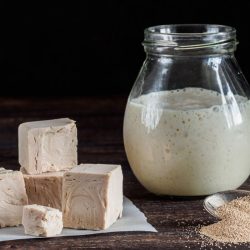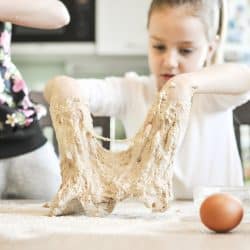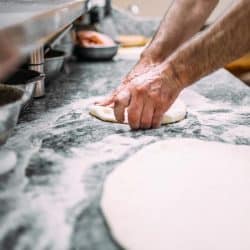It is crucial that you have the right yeast to pizza dough ratio for the best results possible. You are probably wondering how much yeast to use. We have researched all about the correct ratio and have answers that will help you make some delicious pizza dough.
You only need one tablespoon of yeast per two to two and a half cups of all-purpose flour. The bigger the pizza, the more yeast you will need. If you are making multiple pizzas, you can double the recipe, which would result in five cups of flour and two tablespoons of yeast.
Keep reading to learn more about using yeast in your pizza dough. We will discuss whether or not you can use too much when making pizza dough, how much yeast to use, which yeast is best, the difference between pizza yeast and other types, and more.
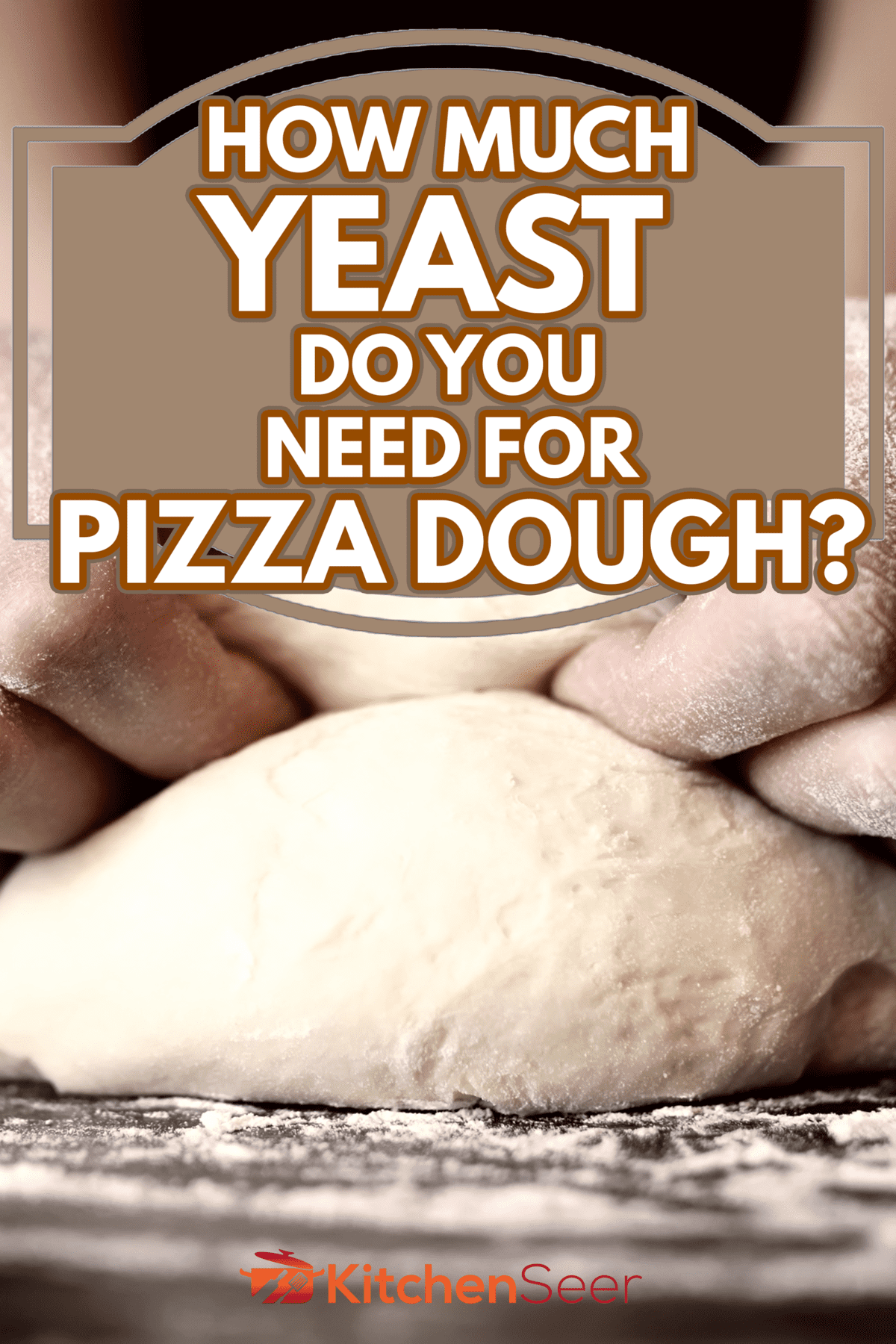
Pizza Dough

Homemade pizza is the best! After making your own, you might never go back to ordering delivery again. You most likely already have all of the ingredients necessary for making delicious pizza dough. Use a large mixing bowl or a stand mixer with a dough hook for your pizza dough, then transfer it to a floured cutting board.
If you want a crisp crust, it is best to bake your pizza at a high temperature. When you bake pizza at too low of a temperature, the crust will end up being soggy underneath the toppings.
Why use yeast when making pizza dough?
The reason you should use yeast when making pizza dough is texture. If you use yeast, your crust will be airy and bubbly rather than dry and brittle. Yeast makes your pizza dough rise. There are some ways to successfully make pizza dough without yeast if you have a time constraint but just about anyone will say pizza dough made with yeast tastes best.
Click here to see this pizza yeast on Amazon
Are you supposed to knead pizza dough?
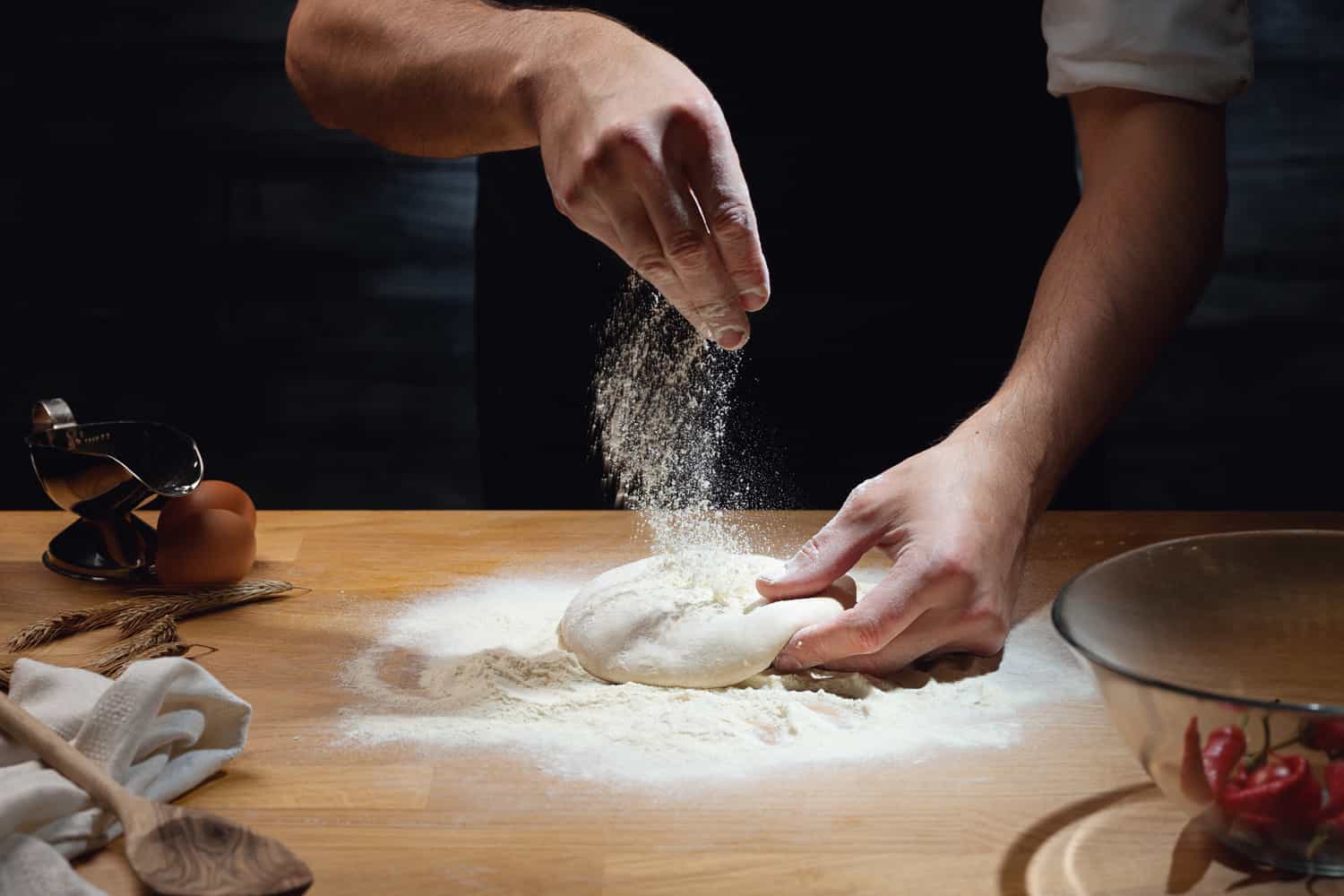
It is helpful to knead pizza dough. You do not have to knead it for nearly as long as you should when making bread such as rolls, though. Pizza dough does not have to fully rise the way that rolls or a loaf of bread do.
When you knead dough, you are changing the way the gluten develops. Gluten builds up as you knead your pizza dough. This results in an ideal texture as long as you do it for the right amount of time. You do not have to knead pizza dough for a long time, just enough that the dough will stretch without breaking.
Your pizza dough will double in size after the yeast has made it rise. To remove gas from the dough, you can punch it down. It only takes two or three light punches to release the gas.
Can you use too much yeast in pizza dough?
You can use too much yeast in pizza dough or any other dough. Making sure the measurements you take of each ingredient are correct is a critical aspect to keep in mind when baking. If you use too much yeast, the texture and taste of your dough will not be pleasant, and the dough will go flat.
Dough can rise for too long. When this happens, the flavor of the dough changes, and the smell does too. Pizza dough has the potential to deflate if you put too much yeast in it.
Yeast that does not bubble is dead and will not make the pizza dough rise. If this happens, you will need to start over with yeast that is not too old. Check the expiration date before adding your yeast in.
How does the amount of yeast affect pizza dough?
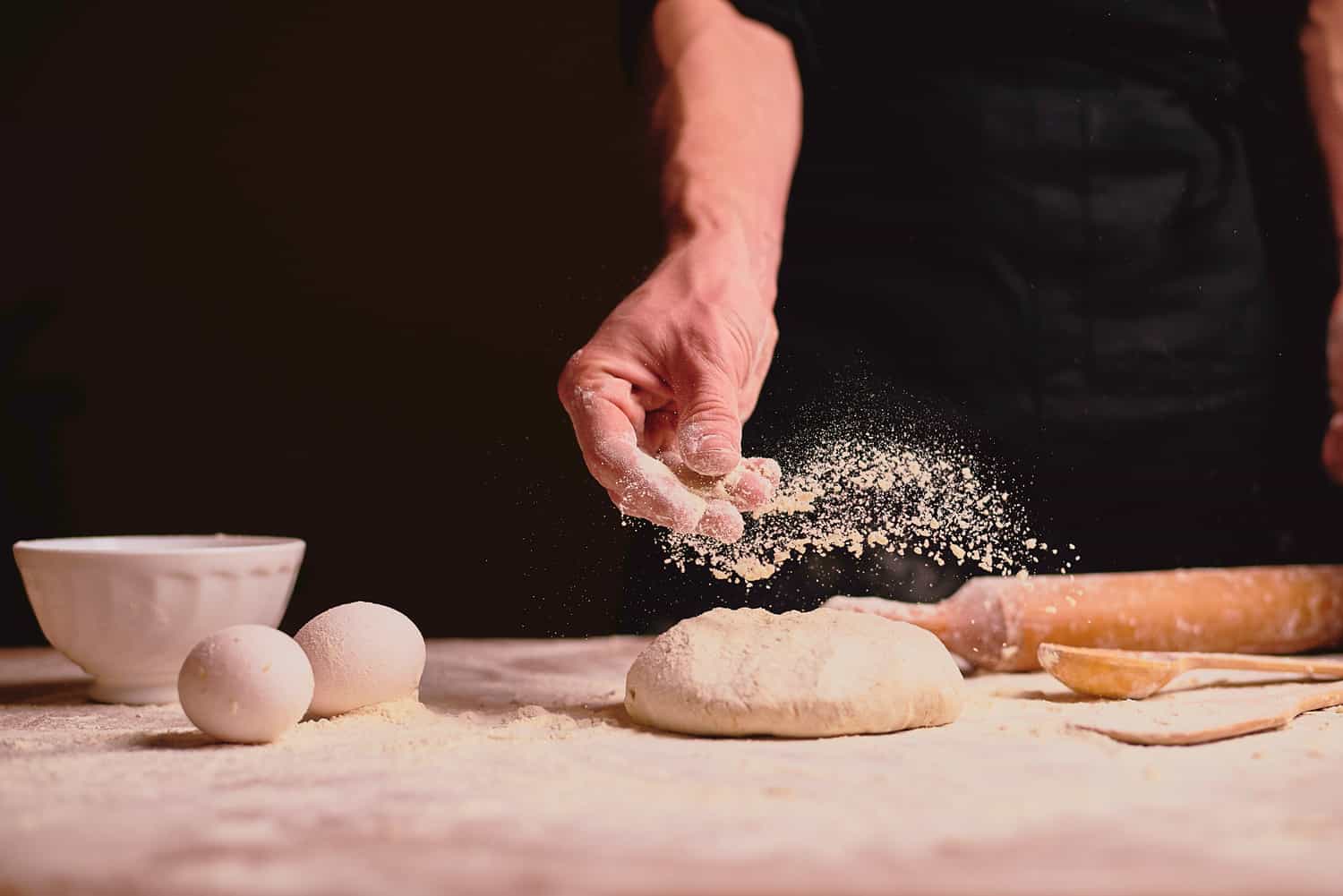
The amount of yeast you use affects the pizza dough by changing its texture. When yeast rises too quickly, the flavor is not the same. Using the right amount of yeast is essential because you don't want a crumbly dry powdery dough.
Using the right amount of yeast will give you a crust with air bubbles or holes throughout it. On the other hand, too much yeast will likely make your pizza dough flatten because it releases the gases too soon. This causes a problem by preventing the flour from expanding.
If you want to yield pizza dough with the right consistency for your liking, be sure to measure out your yeast carefully. Follow the steps to making pizza dough in the correct order to ensure you use the yeast correctly.
If you have accidentally used too much yeast, you can add flour to counteract it. Allow your dough to cool in the refrigerator for about ten minutes, and then add a little extra salt and flour until the ratios are more proportionate.
When you do not use the right amount of yeast, the results are not the same. The goal is to have a stretchy dough that rises for the right amount of time and results in a desirable texture.
What kind of yeast is best for pizza dough?
There are several types of yeast to choose from, between rapid rise yeast, active dry yeast, and instant yeast, to name a few. The preferred option for yeast when making pizza dough is pizza yeast. Pizza yeast is ideal for a few reasons.
The reason pizza yeast works best for pizza dough is that the dough will stay stretched out, unlike dough made with other types of yeast. Pizza yeast has additives that make the dough ideal for pizza. The additives cause the dough to relax, which, in turn, makes it so you can stretch your pizza dough out on your pizza tray or pizza stone.
A good alternative is instant dry yeast works well for pizza dough. Even though pizza yeast is the best to use when making pizza dough, any yeast will work. The next best yeast to use for pizza dough after pizza yeast and instant dry yeast is fast-acting yeast, also known as rapid rise yeast. Be sure you use the correct amount regardless.
The main difference between active dry yeast and instant dry yeast is that one type needs to be activated. The other does not. Active dry yeast means you have to let the yeast become activated before you can bake your dough. Instant dry yeast is exactly what it sounds like. It works instantly upon opening the packet it is in.
Click here to see this active dry yeast on Amazon.
Does pizza yeast need to rise?

Pizza yeast does not need to rise. Pizza yeast makes pizza dough rise as it bakes so that you do not have to wait for it to rise beforehand. This type of yeast has dough conditioners that help the dough be elastic. You need an elastic dough to be able to stretch it out and shape it like you want to.
You can let yeast proof by mixing warm water, sugar, and yeast first. The warm water should be 105°F to 110°F. A meat thermometer is a great way to take the temperature of your water before adding yeast to it. Let those ingredients bubble, and the yeast will start to foam.
After letting your yeast proof then, you can add your mixture to the flour, sugar, and salt that you have in your mixing bowl. This is a quick way to make pizza dough without letting it rise for an extended period. It only takes about thirty minutes for pizza dough to rise.
When you go to purchase yeast, different amounts are available. You have the chance to pick between a packet versus jar. The instructions will say to keep it cold. A packet of yeast typically has seven grams or two and a quarter teaspoons. This can be enough for your pizza dough if you use less flour.
If you do not make dough often, packets will probably work for you. However, if you foresee yourself making pizza dough quite often, go ahead and purchase a jar of yeast to have on hand for whenever you need it.
Can I use baking powder instead of yeast in pizza dough?
You absolutely can use baking powder as a substitute for yeast. The pizza dough will not be as chewy, so the texture slightly differs. It will not taste the same as pizza dough made with yeast, but that does not mean it won't taste great.
Conclusion
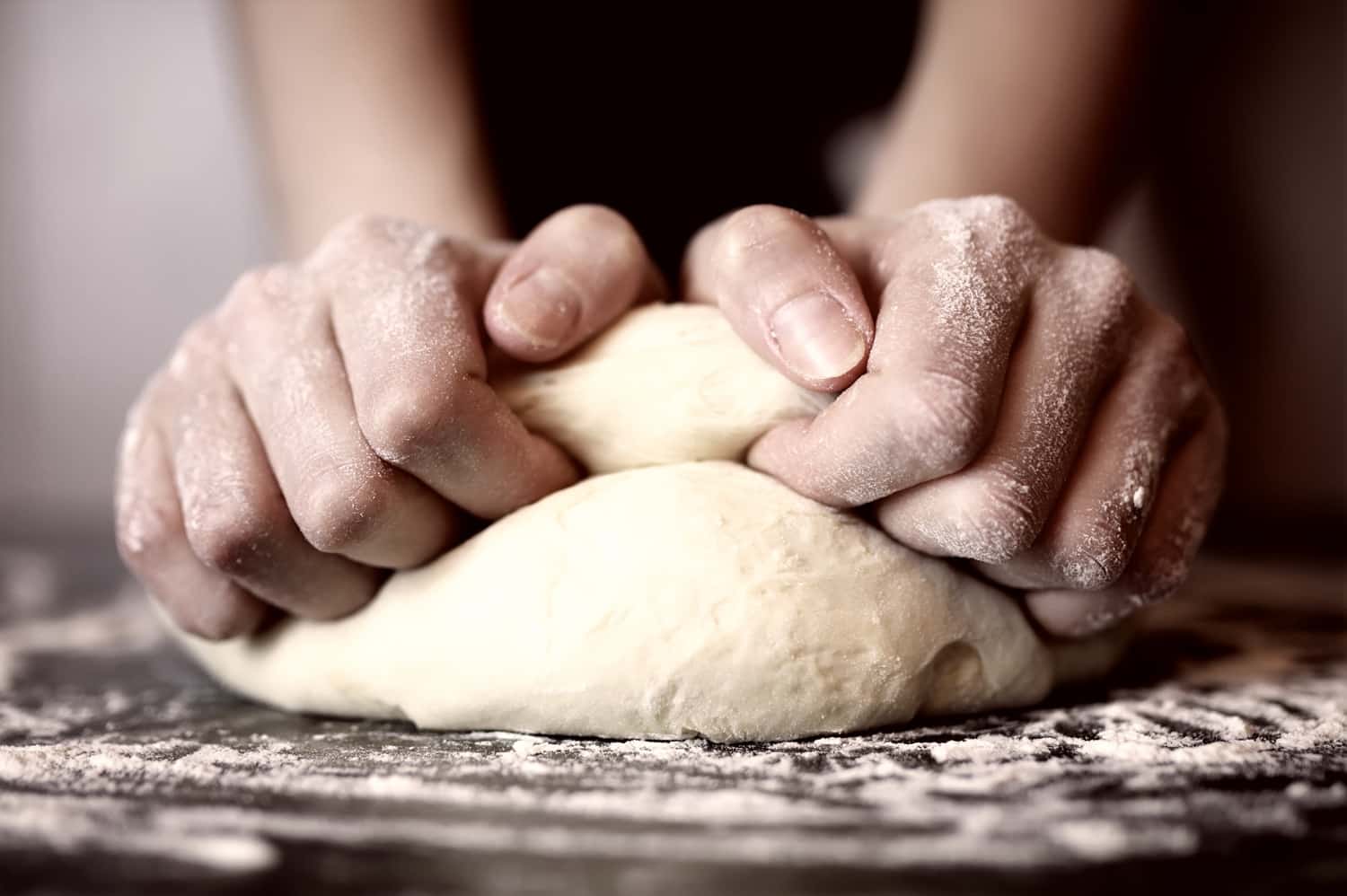
All in all, when you are making pizza dough, you need one tablespoon of yeast for every two to two and a half cups of all-purpose flour. Using the right amount of yeast will yield an airy crust rather than a dry one. Try making your own pizza dough, and it will probably become a tasty weekly or bi-weekly meal choice.
Before you go, check out the following links all about working with pizza dough:
Can Pizza Dough Be Left Out Overnight?
How To Prevent Pizza From Sticking To Tray
Can You Knead Dough With A Rolling Pin?



